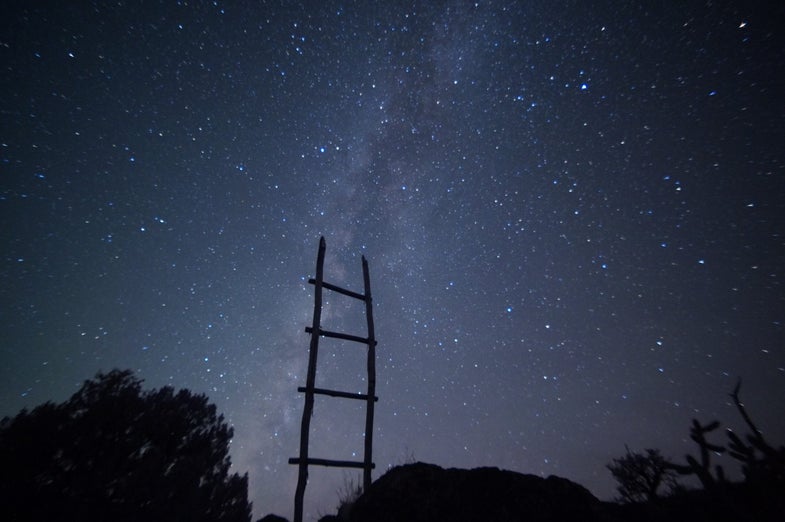Planetarium Shows Ancient Greek Poem Was Probably Written In Early Spring
Written in the stars

Poetry has the ability to transport us to other places and times without our bodies ever leaving the room. But where exactly does it take us?
In the case of one poem, written over 2,500 years ago by the Greek poet Sappho, scientists think they can pinpoint the time to early spring somewhere in ancient Greece.
In a paper recently published in the Journal of Astronomical History and Heritage, researchers from the University of Texas at Arlington used a planetarium to narrow down the window in which Sappho’s ‘Midnight Poem’ might have been written.
“Planetarium software permits us to simulate the night sky more accurately on any date, past or future, at any location,” said Levent Gurdemir, one of the authors of the study. “This is an example of how we are opening up the Planetarium to research into disciplines beyond astronomy, including geosciences, biology, chemistry, art, literature, architecture, history and even medicine.”
In this case, Sappho mentions the Pleiades, a star cluster also known as the Seven Sisters. By using the planetarium software to show when the Pleiades were visible in Greece during Sappho’s lifetime, they could figure out roughly when the poem might have been set.
The poem in question is below:
If that’s all Greek to you, here are three translations from the 1800’s provided by the authors:
The study found that during Sappho’s lifetime (around 570 BC), the earliest date during which the astronomy mentioned in the poem would have been visible in the sky was probably January 25, and the last possible day was March 31, confirming earlier suspicions that it might have been written in the spring.
However others, including blogger Rogue Classicism, have pointed out that the study isn’t saying that Sappho wrote the poem at 11:59 pm on January 25, 570 BC.
In fact, by some accounts, Sappho might have died around 570 BC, but even that isn’t certain. Much of her life (and death) remains a mystery, with the clues long since lost to time. The authors of the study picked 570 BC somewhat arbitrarily, after determining that the Pleiades were taking roughly the same course across the sky for the decades surrounding 570 BC, always appearing over Greece in the springtime. In other words, if she’d written it in 571 BC or 569 BC (or 581 BC, or 559 BC…you get the idea), the dates would be approximately the same.
Nowadays, folks in the Northern Hemisphere can see the Pleiades mostly between November to April–changes in the Earth’s tilt have shifted the time period over the millennia.
It’s interesting to think about what Sappho might have been seeing as she wrote the poem, but it’s also important to note that it’s entirely possible she was taking some poetic license, just describing a lonely evening when even the moon and familiar stars have left her to her thoughts, lying in darkness.
Authors and poets have always looked to the stars for inspiration, including Shakespeare, who sprinkled astronomy liberally throughout his works, but his works weren’t scientific observations recorded in iambic pentameter. It was just marvelous dialogue, just like Sappho’s simple, elegant lines weren’t necessarily a faithful recording of the evening sky. And that’s ok. It doesn’t make her words any less beautiful.
But it still adds a note of complexity and context to the poem to know that if her words were faithful to the skies, that she was writing of an evening set not in the heat of summer or the icy cool of winter, but rather in the cool hopefulness of a spring night.